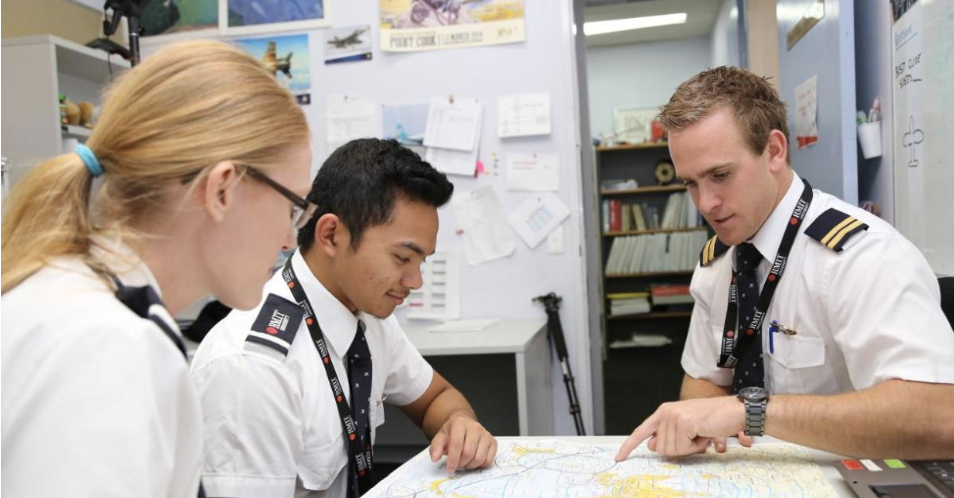
This article about the lack of a pilot pipeline originally appeared in Aviation International News. View here.
In the early 1950s, my mother, Janice K. Barden, stepped into the niche field of aviation recruitment. The industry was still in its early stages and there was no shortage of seasoned pilots. Over her six decades, she witnessed an influx of pilots in business aviation. They came to us after the Korean and Vietnam wars, in the early 1980s, post 9/11, and during the Great Recession in 2008.
The business aviation industry offered a great opportunity for pilots looking to make a career change. They sought more stable career opportunities and perceived corporate flying as financially secure during a period of stalled advancement, when retirements were extended by five years as the retirement age went to 65. Moreover, their extensive flight hours and experience were welcomed in our sector.
My mom had an eye for talent and an unwavering belief: that regional pilots were the hidden gems of the skies. Every day, they experienced frequent takeoffs and landings, braved all sorts of weather, and navigated through high-density airports. They also amassed a lot of flight hours—something that was a requirement to enter business aviation.
Traditional Pilot Pipeline Paths Dwindling
But the current aviation pipeline presents a different scenario. The traditional paths to accruing flight hours have dwindled. You don’t hear of anyone flying canceled checks these days, which in years past was a great way to accumulate time and real flying challenges.
Today, developing pilots have fewer options to gain the experience they need outside of flight instructing. Once a pilot achieves the magic 1,500-hour number, it’s off to the airlines. And without the airlines truly scaling back, there’s no reason for a majority of pilots to consider a career in business aviation.
High Minimums Restrict Our Candidate Pool
To find an attractive captain role within business aviation, we often require anywhere from 3,000 to 4,000 flight hours. Recently, when attempting to place a corporate pilot with almost 3,000 flight hours, I encountered unexpected resistance. Despite the pilot’s impressive log, and being a captain on a midsize jet, the Part 91 insurance requirements stipulated additional qualifications—plus two more years of right-seat experience.
Our high minimums indeed present a challenge. That’s because a pilot needs to accumulate a significant number of hours to upgrade or to secure a job, but typically only flies 200 to 250 hours per year in a business aviation environment. Do the math. Five years might pass before an individual accumulates just 1,000 hours. It’s a significant hurdle for those aspiring to higher responsibilities. Meanwhile, the airlines, including NetJets, are paying handsomely with lower minimum requirements.
Build It and They Will Come
This reality has spurred some business aviation departments to innovate. Several Part 91 flight departments are investing in ab initio-style programs, taking pilots under their wing from the earliest stages of their careers and negotiating with insurance carriers to accept pilots with fewer hours. These initiatives, while promising, are not without their complexities and demand a significant investment of resources.
The business aviation industry now finds itself at a pivotal junction. With airlines offering competitive packages to pilots who reach the coveted 1,500-hour mark, business aviation must find compelling ways to retain talent. There’s a pressing need to explore how we can provide pilots with meaningful experiences that extend beyond accumulating flight hours instructing and into developing a rich professional tapestry of flight expertise.
We might need to consider engaging with pilots before they amass 1,500 hours and present them with persuasive reasons to commit to a career in private aviation. The goal should be to cultivate a workforce that reflects the distinguished qualities of the seasoned pilots of past decades—those who carried not just flight hours but also invaluable experiences from their diverse flying backgrounds.
We Need a New Pilot Pipeline
Going forward, the industry must get creative and proactive. We should develop a pilot pipeline that not only helps aviators meet the hour requirements but also enriches their skill set and job satisfaction. This could include internship programs, opportunities for varied flight experiences, and career development that aligns with the pilots’ long-term goals.
The challenge is not simply to fill flight decks with warm bodies, but to cultivate a community of aviators who are as committed to their craft as they are to the hours logged. To that end, we must work toward creating a professional environment that values the qualitative aspects of a pilot’s journey just as much as the quantitative.
The vision is to foster a climate where pilots are inspired to pursue careers in business aviation, not merely as a stepping stone, but as a destination where they can thrive and contribute meaningfully to the fabric of the industry.
Sheryl Barden, CAM, is the president and CEO of Aviation Personnel International, the longest-running recruiting and HR consulting firm exclusively serving business aviation. A thought leader on all things related to business aviation professionals, Barden is an NBAA CAM Fellow and formerly served on NBAA’s board of directors and its advisory council.
